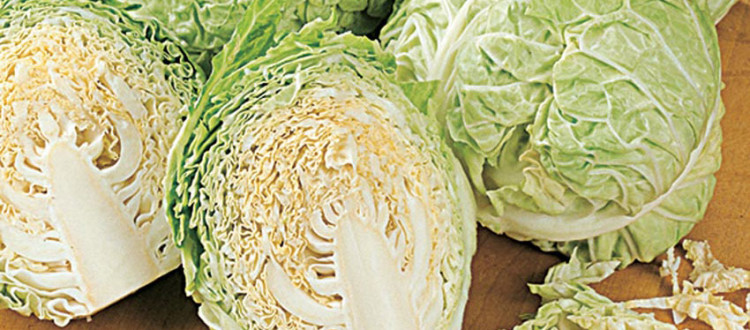Cabbage
Cabbage (Brassica oleracea) is a round or oval, leafy, firm-headed annual vegetable that is related to cauliflower, Brussels sprouts, kale, kohlrabi and broccoli. Cabbage colors can be green, white or purple in color, and can weigh as much as nine pounds when fully mature. Cabbage is an excellent source of vitamin C and fiber, is high in sulfur and is believed to reduce cholesterol.
Cabbage originated in Europe, but the time is unclear. By the time of the Middle Ages, cabbage had become a major staple in the diets of many Europeans. It is often fermented to make sauerkraut, but can also be eaten raw, boiled or steamed.
Like other members of the Brassica family, cabbage is a cool season crop that does not tolerate high or low temperatures.
How to Plant
Optimal results are achieved when the cabbage plant has consistent water and is planted in rich, loamy soil that’s slightly acidic (pH 6.3 to 7.0). The correct pH will help alleviate some diseases, keeping your plant healthy and robust.
Incorporate lots of organic material into the planting site, including amendments rich in nitrogen such as blood meal, fish emulsion or mature compost.
Make certain your transplants are about 12 to 24 inches apart, and bury about 1 to 2 inches of the main stalk in the soil.
Pests
Cabbageworms, slugs, aphids, and cabbage root maggots are the most common cabbage pests. Diseases that can affect cabbage include black rot, club root and black leg. One of the best things a gardener can do to guard against disease and insect infestations is to keep your garden clean. Remove dead plant material immediately and keep your compost pile a safe distance from your garden patch.
Fertilizing
Cabbage benefits from a well-balanced fertilizer, one in which the nitrogen, phosphorus and potassium (N-P-K) are equal in potency. Using a time-release fertilizer will feed the cabbage plant during its growing cycle.
When fertilizing in the weeks leading up to harvest, use a balanced liquid fertilizer as a soil drench.
Harvesting
When the cabbage head is feels firm when you squeeze it, that is the time to harvest. You can leave it in the garden a little longer if desired, but if the head “cracks” open it is definitely time to harvest. Use a sharp knife to cut the base of the head away from the stalk.
Recommendations for Use
- Cabbage is a versatile vegetable that can be stored in your refrigerator for several weeks.
- Cabbage can be used raw to make coleslaw, or it can be enjoyed cooked.
- Cabbage can be fermented to make sauerkraut. Sauerkraut is a popular and healthy way to enjoy cabbage — fermentation is a relatively simple process and easy to do.

